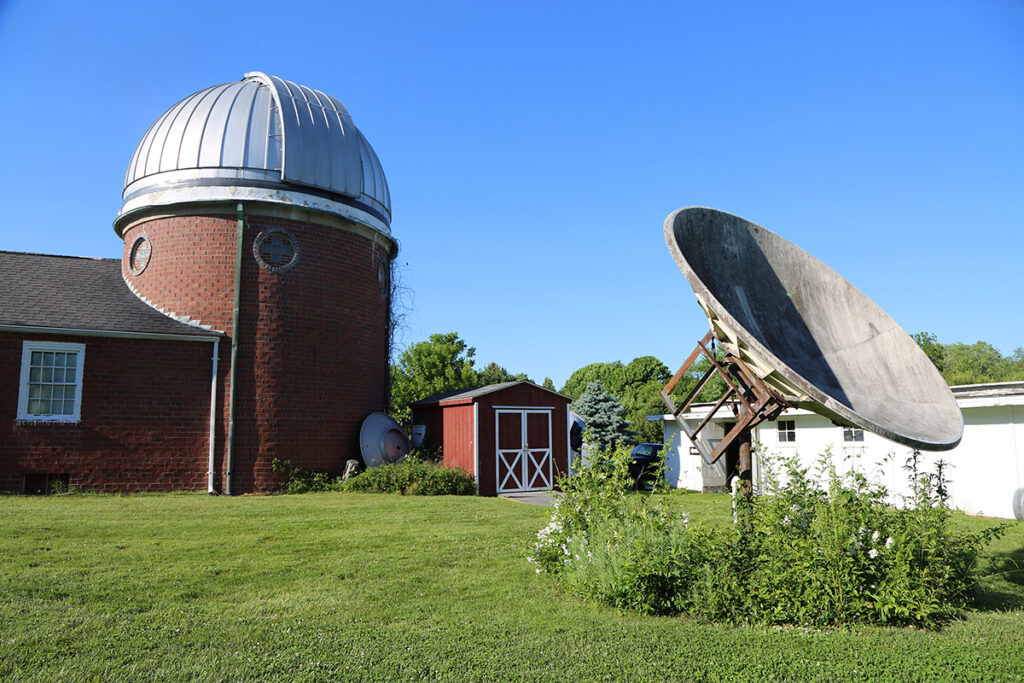Here’s how to view the rare ‘Green Comet’ on the North Fork

This winter, Southold’s Custer Institute and Observatory is making plans to welcome a visitor that hasn’t been seen in these parts in about 50,000 years: an ultra-rare green comet.
The Custer Institute — Long Island’s oldest public observatory — will give stargazers the chance to see the comet at its regular Saturday night viewing events this winter from dusk to midnight, weather permitting.
The green comet, also known as C/2022 E3 (ZTF), was discovered by astronomers at California’s Palomar Observatory last March, and traces an orbit around the sun so deep into the edges of the solar system that it last passed Earth by some time during the Stone Age, according to earthsky.org.
The comet is calculated to blast past Earth at 27 million miles, its closest distance to the planet, on Thursday, Feb. 2, according to earthsky.org.
The comet will be visible through the first week of February on Long Island. It’ll be visible from the Northern Hemisphere until mid-March, according to Steve Bellavia, a Custer Institute volunteer, though the comet will grow dimmer and harder to view over time, requiring a moderate-sized telescope to see it.
“We’re going to do our best to include the comet as one of the objects that we view on Saturday nights,” said Alan Cousins, Custer vice president.

The institute will have accommodations on the premises for those who can’t get up to the institute’s dome to view the comet and other celestial objects.
“We also intend to have a live feed from the dome on a big screen TV in our waiting room on the main level,” Mr. Cousins said. “That way people can see the comet or whatever object we’re viewing on a live camera image.”
“You want to see it between the astronomical twilights, between 6:30 p.m. and 5:30 a.m.,” Mr. Bellavia said.
Other tips are to view the comet from any dark location.
“North-facing beaches on the North Fork are good because Connecticut’s far enough away that their light pollution isn’t quite as obtrusive,” Mr. Bellavia said.
If you can’t make it to Custer Institute, McCabe’s Beach in Southold, he said, was a good location. He also recommended Wildwood State Park in Wading River, although he recommends researching whether a stargazing permit is necessary, which allows late-night parking at the state parks.
Mr. Cousins recommended using a pair of binoculars to search for a “greenish glowing object” near Polaris. He said the comet would be difficult to see with the naked eye.
NASA describes comets as “cosmic snowballs of frozen gases, rock and dust that orbit the sun.” According to NASA, once the comet’s orbit brings it closer to the sun, the comet heats up and spews dust and gases into “a giant glowing head.” The dust and gases form a tail that stretches away from the sun for millions of miles.
Mr. Bellavia, who is also a member of the North Fork Dark Sky Coalition, has been photographing comets and celestial objects since 2015.
He’s captured images of 47 different comets, including three images of the green comet.
Like most comets, the green comet has two tails: an ion tail and a dust tail. What makes the green comet so unique is its long ion tail.
“This comet is showing both [tails] very well, that’s what makes it sort of a really cool comet,” Mr. Bellavia said. “[Comets are] like fingerprints, each one is just a little different than the other ones, so they’re all unique and rare, which is cool.”
Mr. Bellavia recommended websites like cometchasing.skyhound.com as great resources for tracking the specific location of the comet.
“I’m glad it makes people look up and I’m glad it makes people think about the dark sky problem,” he said. “Hopefully it’s an eye-opener for other reasons, not just the comet itself but the universe in general, that it’s something we need to preserve and keep.”








